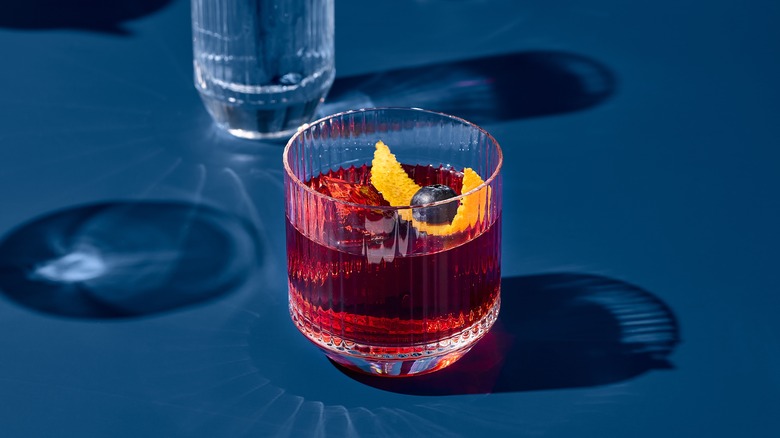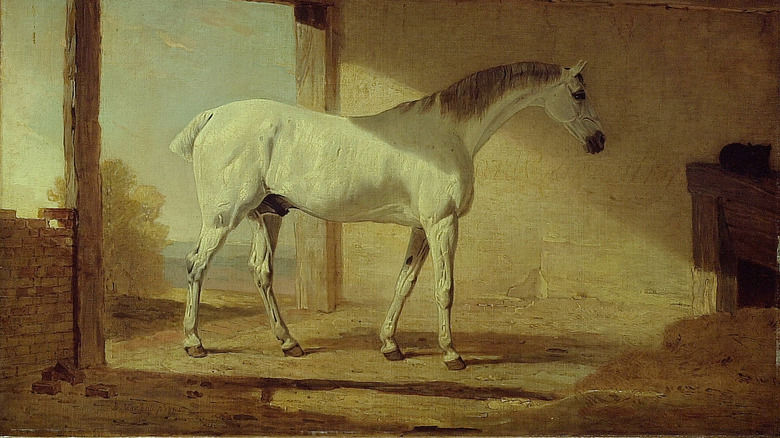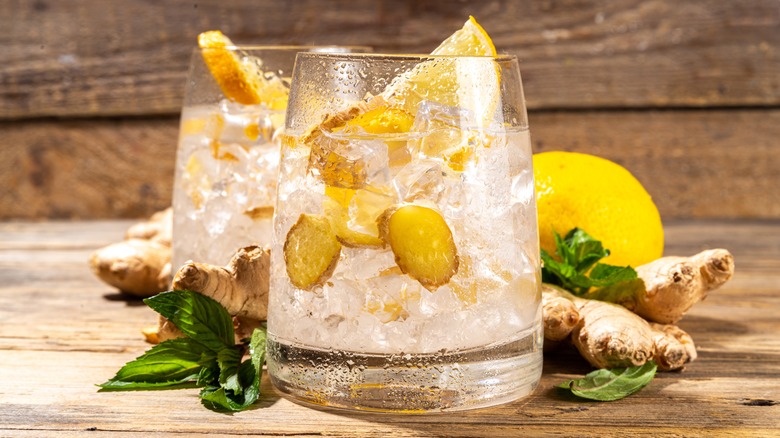The Word Cocktail Has Some Very Unclear (But Probably Unpleasant) Roots
The art of mixology has murky origins, and accounts of its history are frustratingly inconsistent. Many sources claim that cocktails were invented by an American bartender named "Professor" Jerry Thomas, who published the first book on mixology, "The Bartenders Guide," in 1862. But while Thomas certainly played a key role in popularizing mixed drinks, their history can be traced back at least a century further, and a whole ocean away, to 1700s Britain. Before Jerry Thomas, there was James Ashley, a Londoner renowned for his concoctions of spirits and bitters that, by all accounts, were clear predecessors of the modern cocktail. But Ashley didn't call his mixed drinks cocktails; he called them "punch," and the matter of when, why, and how this change in nomenclature occurred is a mystery.
Many books have been written about the history of cocktails, and yet nobody has been able to definitively prove where the word "cocktail" originated. Some say an unnamed Aztec king ordered his daughter, Xochitl, to serve mixed drinks to his guests, and her name was later corrupted into English as "cocktail." Others claim that, during the Revolutionary War, an innkeeper named Betsy Flannagan stole her neighbor's chickens to feed a group of Frenchmen fighting for the American cause. She put chicken feathers in their drinks, leading the soldiers to toast, "Vive le cock-tail!" Both claims are baseless, and they represent just a fraction of the wild theories out there. Either one, however, would be more appetizing than the probable truth.
A horse walks into a bar ...
The origin of the word cocktail almost certainly involves horses. Not exactly what you'd expect, but there are actually two theories linking the word to the equine world. The Oxford English Dictionary notes that the compound term "cock-tail" first entered the lexicon in the 1700s, and it had nothing to do with beverages. It was originally used to refer to horses whose tails had been docked. This had the effect of making the tail stick straight up, similar to the tail of a rooster, thus, a "cock-tail."
Docking was a fairly common practice for coach horses but not racehorses. Thus, a racehorse whose ancestry included any horse with a docked tail could not be considered a thoroughbred. By the 1800s, cock-tail had become a common term for any non-thoroughbred horse. What does any of this have to do with your martini? It comes down to wordplay. A cocktail is a mixed drink, just as a cock-tail horse is mixed-breed.
When the word cocktail was first applied to the world of libations, it referred to a specific kind of drink, made from a spirit of choice, combined with sugar, water, and bitters. It was similar to a sling, a drink made with spirits, water, sugar, and lemon juice, and thus was sometimes referred to as a "bittered sling." However, in the mid-1800s, the accepted definition of a cocktail expanded to refer to any alcoholic mixed drink.
Cocktails might have been named after horses for a different reason
It turns out there might be a different connection between cocktails and horses, and it is anything but appetizing. In a 2016 Saveur article, beverage historian David Wondrich took a deep dive into the origin of the word cocktail and learned of an early reference to the term that changes everything we thought we knew.
In a 1798 edition of London's The Morning Post and Gazetteer, drink historians Jared Brown and Anistatia Miller discovered a satirical piece about then-Prime Minister William Pitt and his supposed drink order of a "cock-tail (vulgarly called ginger)." A number of drinks are listed in this piece, with accompanying prices, and the ones that explicitly mention spirits as an ingredient are notably more expensive than the "cock-tail" in question. This suggests that Mr. Pitt's cocktail was a non-alcoholic ginger beverage, possibly similar to ginger ale and ginger beer.
Why would the word cocktail be applied to a non-alcoholic drink? Some might still point to the "mixed" analogy, but the key is actually in the ginger. It was once common for horse breeders to do something called "feaguing," wherein they would give their horses suppositories of ginger root, which irritated them so much that they would stick up or "cock-up" their tails. A cocked tail was seen as a sign that the horse was healthy, energetic, and in good spirits, raising their sale price. Feague became a figurative term used for raising one's spirits, and a cocktail referred to the ginger (and later the bitters) used to spice up a drink. Eventually, the term would come to describe the drink itself; after all, a cocktail is a pick-me-up of its own kind and one we'd much prefer to a knob of ginger in our rear ends.


